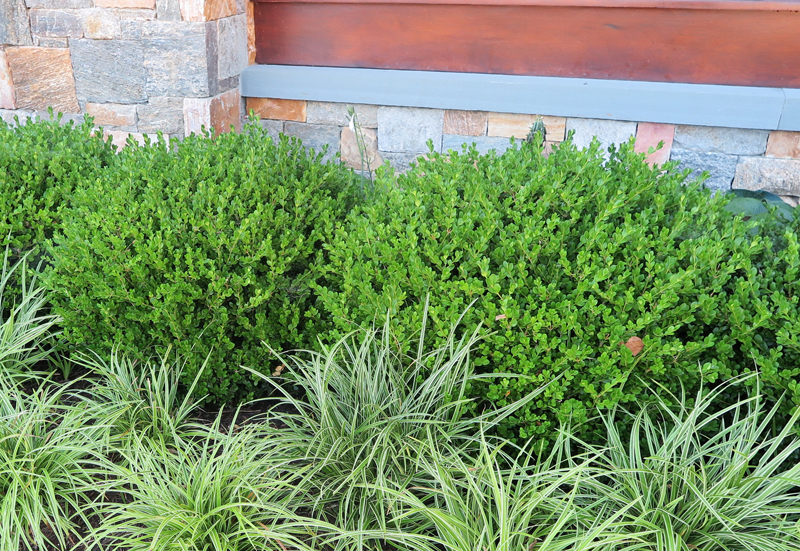Boxwood
Boxwood, Buxus
Boxwoods define formality in gardens. These versatile evergreens can be pruned to form neat hedges, geometric shapes or fanciful creatures. When allowed to grow naturally, they form attractive, rounded mounds.

Growing
Boxwoods prefer partial shade but adapt to full shade or to full sun if kept well watered. The soil should be fertile and well drained. Once established, boxwoods are drought tolerant. It is best not to disturb the earth around established boxwoods. You’ll often see over-exposed roots and damage due to the use of leaf blowers around the shrubs. Refrain from using leaf blowers around boxwoods if possible. Using mulch benefits these shallow-rooted shrubs.
Tips
These shrubs make excellent background plants in mixed borders. While they are most commonly continually sheared as boxed hedges, plant are actually very attractive if left to growing in their natural round shape.
Recommended
B. microphylla var. koreana (Korean littleleaf boxwood) is quite pest resistant and grows about 4' tall, with an equal spread. The bright green foliage may turn bronze, brown or yellow in winter and a number of cultivars are available. More tolerant of heat and humidity than common boxwood.
B. sempervirens (common boxwood) can grow up to 20' tall, with an equal spread if it is not pruned. Cultivars are available in varied sizes and forms. ‘Suffruticosa’ (edging boxwood) is a compact, slow-growing cultivar that is often used as hedging.
Some of the best boxwood selections are cultivars developed from crosses between the two listed species. These hybrids possess attractive winter color, vigor and a high level of pest resistance common to boxwood. ‘Green Velvet’ and ‘Green Mountain’ are good selections. ‘Green Tower’ is a unique narrow upright growing specimen.
Features: dense, rounded, evergreen shrub; bright green foliage; slow, even growth
Height: 4’–20'
Spread: equal to or slightly greater than height
Hardiness: zones 4–8
Notes: Boxwood foliage contains toxic compounds that when ingested can cause severe digestive upset and possibly death.


